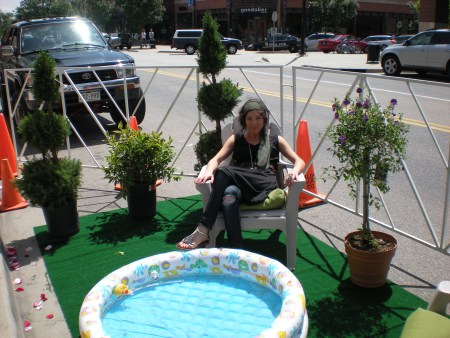Parking a car in the United States is expensive. Not necessarily to the car owner, but to society. A fascinating and recent report by the Victoria Transport Policy Institute sheds some light on how much a parking space costs, and who actually pays the freight for this luxury.
According to the institute’s “Transportation Cost and Benefit Analysis II” report released this spring, parking spaces range from 144 to 200 square feet, and depending on how one calculates it, there are an estimated 105 million to 2 billion off-street parking spaces in the U.S. Each space costs almost $15,000 to construct, requires another $4,500 to $6,000 in soft costs (design, engineering, permits, etc.), and then requires ongoing upkeep, such as snow removal, repairs and so on. Additionally, parking spaces impose environmental costs, such as green space loss (reduced landscaping, farmland, wildlife habitat), increased impervious surfaces and related storm water management expenses, heat island effects and more.
Moreover, the generous parking requirements of many municipalities and low parking prices tend to discourage infill development and encourage sprawl, resulting in more of us driving instead of using alternatives such as walking and biking, than if drivers had to pay their way to park. Clearly, drivers don’t pay their way, as the report estimates most drivers use “unpriced parking” for 99 percent of non-commute trips. In turn, the cost is picked up by businesses and government, which obviously shift these costs to consumer good prices and taxes.
When I hear the argument that there is not enough parking in Boulder, or that a shortage hurts our economic fortune, I cringe. In fact, some studies say when you reduce the number of auto parking spaces you actually net more parking spaces. While this may seem counterintuitive, it really is logical. By taking out parking spaces and expanding bike or walking facilities, a city encourages more pedestrian activity. Take Boulder, which is well above national averages for walking and biking. By adding bike lanes, trails, and engineering a variety of sustainable transportation options, more people participate in these environmentally sound practices. As a result, by converting drivers to people who bike, walk or take the bus, fewer parking spaces are needed.
And this is just the tip of the issue. By investing in sustainable methods of transportation, municipalities reduce the demand for parking, which can lead to a decrease in the rate of per capita vehicle ownership. This saves people money and encourages them to adopt an active lifestyle. Additionally, it discourages low density, dispersed development patterns or sprawl making for a more connected, not to mention healthier, community.
As director of Boulder Walk and Bike Month, these issues matter to me. We are in the midst of facilitating more than 80 walking and biking events and activities this month (thanks to all of you who have come out to play so far!) in Boulder.
This Friday, we’ll host an event I wish would mushroom each year: Park(ing) Spaces Day. As a statement that we can do better than paving more and more parking spaces for cars, more than a dozen parking spaces on east Pearl Street will be converted into “parklets,” where folks will do what strikes their imagination, from setting out a sand box to a chess table to reading lounge in place of an auto spot for a few hours. Come down and join us. While it is just a small window of time – from 10 a.m. to 2 p.m. – and it only involves a handful of locations, it is the statement and consideration that we might be able to do more creative things with this precious downtown space that counts.
This Walk & Bike Month, I encourage the thousands of Boulder commuters to explore their transportation options and experience just how convenient and fun walking and biking can be. Learn more at www.communitycycles.org.




 (8 votes, average: 4.00 out of 5)
(8 votes, average: 4.00 out of 5)